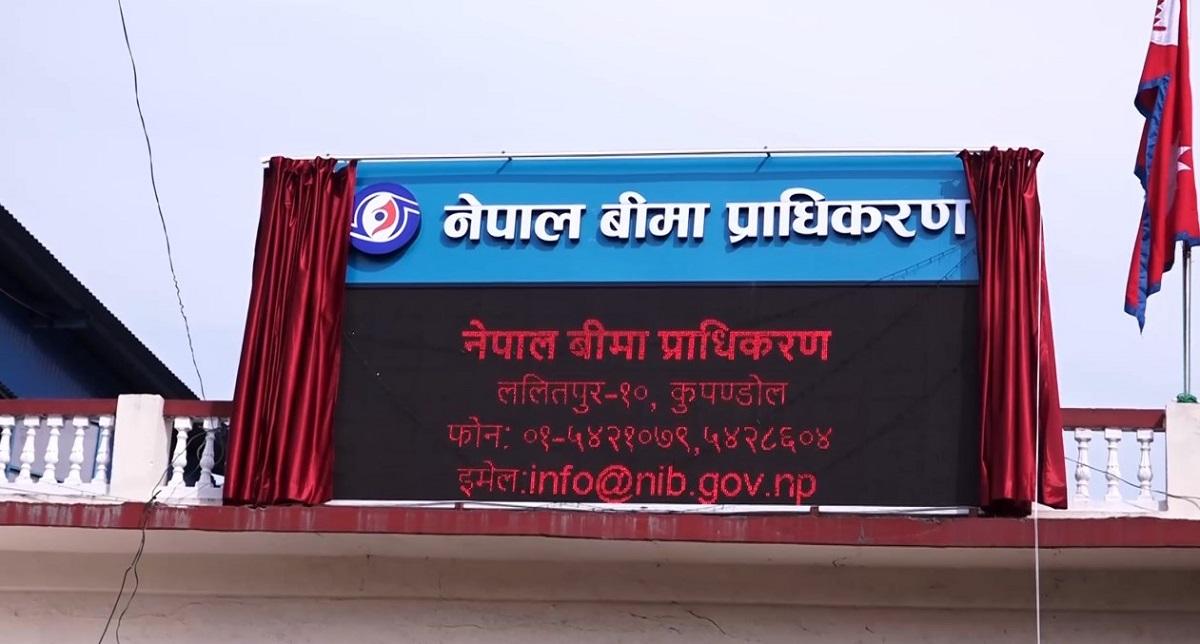By Dipesh Ghimire
Non-Life Insurers Pay Rs. 3.68 Billion in Claims from GenZ Movement Damages; Total Insurance Claims Exceed Rs. 23.46 Billion

Kathmandu — Non-life insurance companies in Nepal have so far paid out approximately Rs. 3.68 billion in claims related to the damages caused during the recent GenZ Movement protests. According to data compiled by the Insurance Board (Beema Pradhikaran), this amount includes both advance and partial payments, out of the total claim value of Rs. 23.46 billion reported by insurance companies.
The figures indicate that, while significant progress has been made in claim settlements, a large portion of the total damage claims — nearly Rs. 19.78 billion — still remain under assessment or in the process of verification, reflecting the massive financial impact the unrest has had on Nepal’s insurance sector.
Property Insurance Hit the Hardest
Among the categories of non-life insurance, property insurance has suffered the heaviest losses. A total of 693 property damage claims have been filed, with a cumulative claim amount of around Rs. 19.04 billion.
Out of this, companies have already paid Rs. 2.93 billion (including advance settlements) to affected clients. This category accounts for over 80 percent of the total claim value, underscoring the widespread destruction to physical assets — such as buildings, business premises, and private properties — during the protests.
Insurance experts note that this scale of property-related damage is unprecedented in Nepal’s recent insurance history, testing the financial resilience and liquidity of domestic insurers.
Motor Insurance Also Faces Heavy Losses
The second-largest impact was seen in motor insurance, where 2,290 claims were registered. The total estimated claim amount stood at Rs. 3.47 billion, of which insurers have so far settled approximately Rs. 686 million.
Most of these claims are linked to vehicle vandalism, arson, and accidental damage during the protest period. Motor insurance settlements are expected to rise further in coming months as verification and documentation processes progress.
Engineering, Transport, and Miscellaneous Claims
In the engineering and contractor’s risk segment, insurers received 209 claims worth about Rs. 547.5 million, and around Rs. 62.3 million has been paid to date.
Similarly, in the transport insurance category, 12 claims amounting to Rs. 16.8 million were filed, with Rs. 4.7 million already paid.
In the miscellaneous insurance segment, 42 claims were lodged with a total value of Rs. 393 million, of which Rs. 2.3 million has been disbursed as advance or partial payment.
These figures illustrate that, while the bulk of claims are concentrated in property and motor insurance, almost all segments of non-life insurance have been affected by the unrest to varying degrees.
Nepal Reinsurance Company Releases Rs. 2.48 Billion to Support Insurers
To help non-life insurance companies meet their obligations, Nepal Reinsurance Company Ltd. (Nepal Re) has released Rs. 2.48 billion as advance reinsurance payouts (peshki) to its partner insurers.
According to the company, a total of 2,857 reinsurance claims worth Rs. 15.82 billion have been registered so far in connection with damages caused during the GenZ Movement.
The reinsurance support is crucial for maintaining liquidity and solvency within the domestic insurance market, allowing primary insurers to process and settle claims without jeopardizing their financial stability.
The GenZ Movement and its aftermath have emerged as one of the most significant stress tests in Nepal’s insurance history. The cumulative claim amount of Rs. 23.46 billion — equivalent to nearly 5% of the annual gross premium income of the non-life insurance industry — highlights the scale of the economic losses triggered by the protests.
While the partial payments of Rs. 3.68 billion indicate that insurers have responded proactively, the remaining unpaid portion underscores the financial strain and risk exposure the sector faces. Analysts warn that delays in loss assessment, reinsurance coordination, and cash flow management could slow down the overall settlement process.
The reliance on Nepal Re’s Rs. 2.48 billion liquidity injection also shows that the domestic insurance ecosystem remains heavily dependent on reinsurance backing to absorb large-scale shocks.
Insurance experts suggest that the incident should prompt a re-evaluation of risk management, premium pricing, and urban violence coverage policies, especially in politically sensitive or high-risk zones.
The Insurance Board has urged companies to expedite claim settlements while maintaining transparency in assessment and documentation. The Board is also considering introducing a national disaster and riot risk pool, similar to international models, to spread out catastrophic risk exposure across multiple insurers.
For the short term, the industry faces challenges related to cash flow management, claim verification delays, and rising reinsurance costs. However, in the long run, the event may strengthen regulatory frameworks and encourage insurers to adopt advanced risk modeling, digital claim tracking, and diversified reinsurance partnerships.









